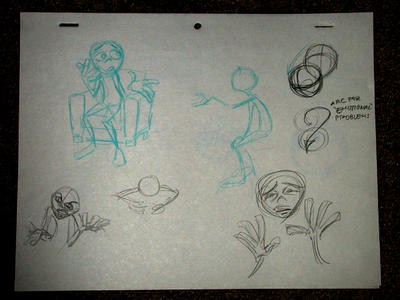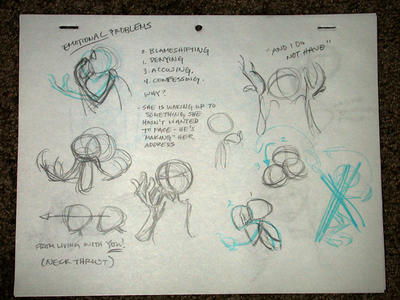Class 3 - Week 3: Second Pass
After getting some distance on the piece (I read people's comments on last week's work, but let the shot sit for most of the week), I realized what Mark had said in my eCritique. For as troubled and uncertain as my character is, she was in his face too much of the time in my reference and first blocking pass. So I saved the main confrontational moment for when the "you" of "it's from living with you!". That really makes that moment so much stronger than it was before.
I also simplified the hand gesturing at that moment, going for what we both felt was the stronger choice - the hand on the bed.
I spent most of my time with the end, doing many different iterations of "secrets and lies" to convey that she is confident about saying "secrets" but more uncertain and significantly more crushed and afraid of the "lies". It was really tough finding the right balance between putting enough information in there and not overacting.
I had to pull way back on the head movements. My tendency was to overexaggerate and it looked wrong - too much emphasis all over the place. But by dialing it down (a lot) and trying different combinations of expressions, I finally came up with something that felt right to me.
It's interesting how different the animation looks when it's fullscreen and when it's a tiny little .mov file.




